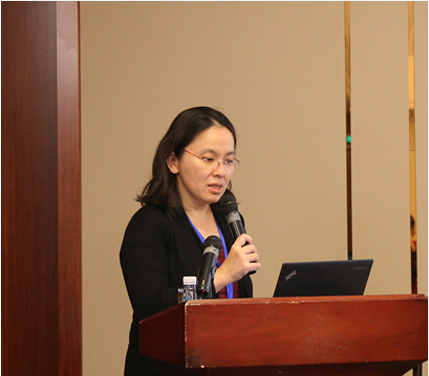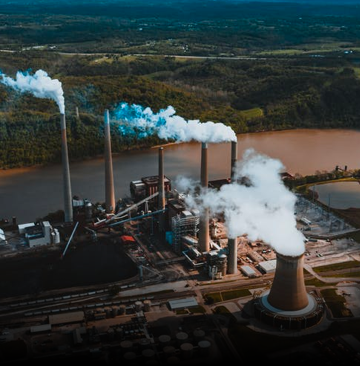World Environment Day: Reducing air pollution key to better life
World Environment Day is the United Nations day for encouraging worldwide awareness and action to protect our environment, and occurs on June 5 every year. Since it began in 1974, the event has grown to become a global platform for public outreach that is widely celebrated in over 100 countries. Above all, World Environment Day is the “people’s day” for doing something to take care of the Earth. That “something” can be local, national or global. It can be a solo action or involve a crowd. Everyone is free to choose.

Each World Environment Day is organized around a theme that draws attention to a particularly pressing environmental concern. The theme for 2019 is “Air pollution”. Every World Environment Day has a different host country, where the official celebrations take place. The focus on the host country helps highlight the environmental challenges it faces and supports worldwide efforts to address them. This year’s host is China.
With air pollution everywhere, we are sucking in tiny particles that attack our lungs, heart and brain at every moment. Host country China chose this theme, which invites the world to consider how to reduce the amount of air pollution produced and the impact of it on our health. Globally, 9 out of 10 people breathe air that exceeds World Health Organization (WHO) standards, and about 7 million people die each year from air pollution.
Air pollution may cause many other problems, including a variety of illnesses and lower IQs. It is also intricately tied to global warming, another severe consequence of anthropogenic activities. Air pollution is preventable, and everybody needs to work together to reduce and eliminate it.
With that in mind, the School of Environmental Science and Engineering at Southern University of Science and Technology (SUSTech) has recruited scientist and professor Tzung-May Fu to its faculty. Her research focus is air pollution, atmospheric chemistry, and chemistry-climate interactions, with particular emphases on organic gases and organic aerosols. The Newshub spoke to Professor Tzung-May Fu to find out about her research, her interest in air pollution and what’s really important to know about it.
After a short period as a postdoctoral fellow in the School of Engineering and Applied Sciences at Harvard, she continued on to the Hong Kong Polytechnic University where she was an Assistant Professor in the Department of Civil and Structural Engineering. In 2010, Tzung-May Fu moved to Beijing to take a position as a Tenure-Track Assistant Professor in the Department of Atmospheric & Oceanic Sciences at Peking University. Following her promotion to Associate Professor with tenure in 2016, she joined SUSTech in 2019 as a full Professor in the School of Environmental Science and Engineering.
We asked Professor Tzung-May Fu why she chose to research air pollution. She said that it is a very personal science, because so many people suffer from the impact of it. The science of air pollution is also highly interdisciplinary, involving chemistry, physics, mathematics, computer science and other disciplines.
Professor Tzung-May Fu spoke about the double threat of air pollution and climate warming, as well as the dilemma of the short term problems of trying to fix it. With the burning of fossil fuels, along with the industrial and residential use of fuel and many other anthropogenic activities, there is a common source for air pollution and the greenhouse gases that are associated with climate warning. Understanding this is more important than anything else. She also noted that there are some interesting interactions between both air pollution and climate warming. Professor Tzung-May Fu said that switching to cleaner fuel and adopting cleaner production processes would help control air pollution and combat global warming at the same time, giving us “double bang for the buck” and stronger incentive.
Professor Tzung-May Fu’s research group is particularly interested in the role of organic gases and aerosols. This area of research is diverse, with tens of thousands of organics, as Professor Tzung-May Fu called them, in the atmosphere. Researchers are constantly finding new organics, working out what they do and how they react. This area of research is developing rapidly, with much of the research identifying different organics and the pathway for their formation in the atmosphere. Professor Tzung-May Fu explained that there is evidence for the presence of a large amount of organics in the atmosphere, but we do not know what they are, where they come from or how they are produced in the atmosphere, or the full impact of those organics to climate. She also noted that reactions can vary as a result of a wide range of factors.
We were curious to know how China can continue to maintain its world-leading role in tackling domestic air pollution. Professor Tzung-May Fu acknowledged that China has done an excellent job at reducing PM2.5 emissions. China’s technological advantages mean that it can innovate in trying to reduce other forms of emissions, such as ozone and secondary organic aerosols, both of which are becoming increasingly important.
“The technology to control SO2 (sulfur dioxide) is mature and the implementation of the technology has been done particularly well. This is why we’ve seen SO2 emissions come down so rapidly in the last 15 years in China. If we’re going to go after VOCs (volatile organic compounds) and other harder to control pollutants, we need to develop new control or substitute technologies that will help us achieve that.”

Much of Professor Tzung-May Fu’s research focuses on chemical reactions at the atmospheric level. She explained the difference between primary and secondary pollutants, with primary pollutants being those that we can easily control and secondary pollutants being emitted as precursors that may not be toxic by themselves, but become toxic or climate-relevant via atmospheric reactions. Professor Tzung-May Fu pointed out that Shenzhen is leading the country by being very close to meeting the second interim standard for PM2.5 recommended by the World Health Organization (WHO), but to truly get below that level, Shenzhen needs to deal with secondary pollutants. The key to dealing with secondary pollutants is working out how they react and evolve in the atmosphere.
“The atmosphere is like a flowing flask, with variable temperature, wind and humidity conditions that move throughout the flask at all times, depending on the atmospheric conditions.”
We asked about how forest fires and bushfires act as a source of air pollutants. Professor Tzung-May Fu confirmed that fires are indeed important seasonal sources of air pollution. Great progress has been made in the past decade in trying to quantify the spatiotemporal variability of natural and human-induced forest fires and bushfires through satellite imagery. Techniques involving inverse modeling of surface and satellite observations have also helped. However, the amount of pollutants emitted from these fires are still very uncertain. Moreover, the occurrence of these fires are hard to forecast, which limits the accuracy of air quality in areas prone to these fires.
Professor Tzung-May Fu also discussed how, while most air pollutants we care about are emitted by human activities, some organics are emitted by natural vegetation in large quantities. The interactions between natural and anthropogenic pollutants is important. With her research specialty into organics, she noted that the eastern part of China is a unique ecosystem, with all sorts of emissions coming from this vast area. Many countries have specific areas that emit pollutants particular to industry and nature. However, the conglomeration of industry and nature in China means that everything is emitted throughout the whole region.
Education is essential for helping people understand the importance of air pollution. Professor Tzung-May Fu believed that people have become more aware of air pollution and what it means. Society has moved a long way in the last few years in developing a better understanding of air pollution, in conjunction with climate change. Esteemed faculty members like Professor Tzung-May Fu believe that there is potential for everyone to breathe clean air in the future, but we must work hard together in an interdisciplinary fashion to find the best ways to solve our air pollution problems.
Related articles:
China to host World Environment Day 2019 on air pollution – http://www.chinadaily.com.cn/a/201903/16/WS5c8c1e9fa3106c65c34eeeb5.html , https://www.unenvironment.org/news-and-stories/press-release/china-host-world-environment-day-2019-air-pollution
